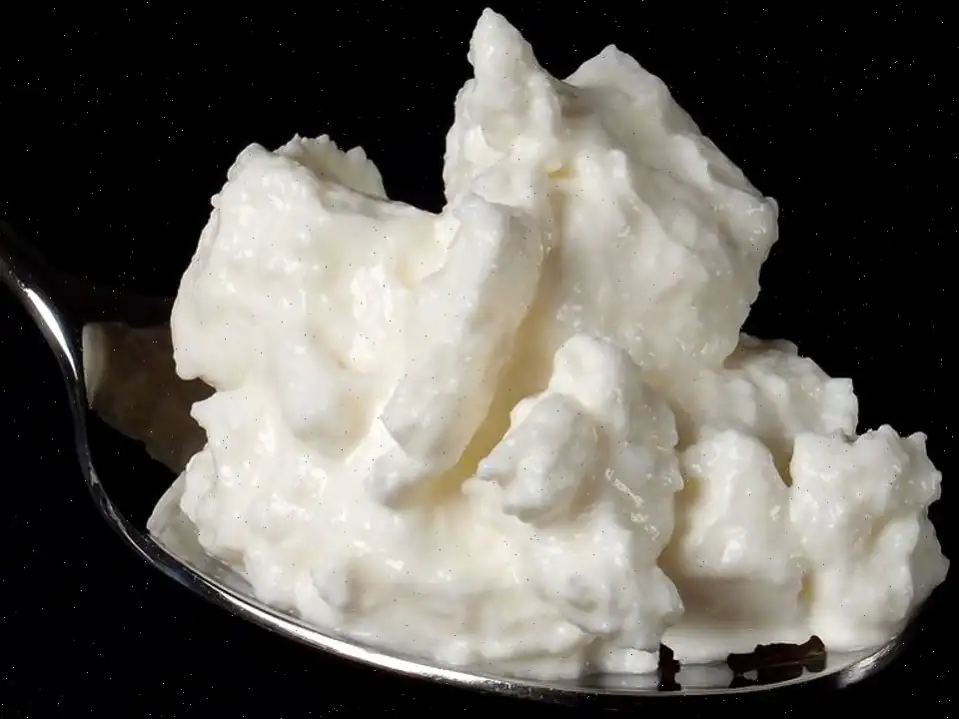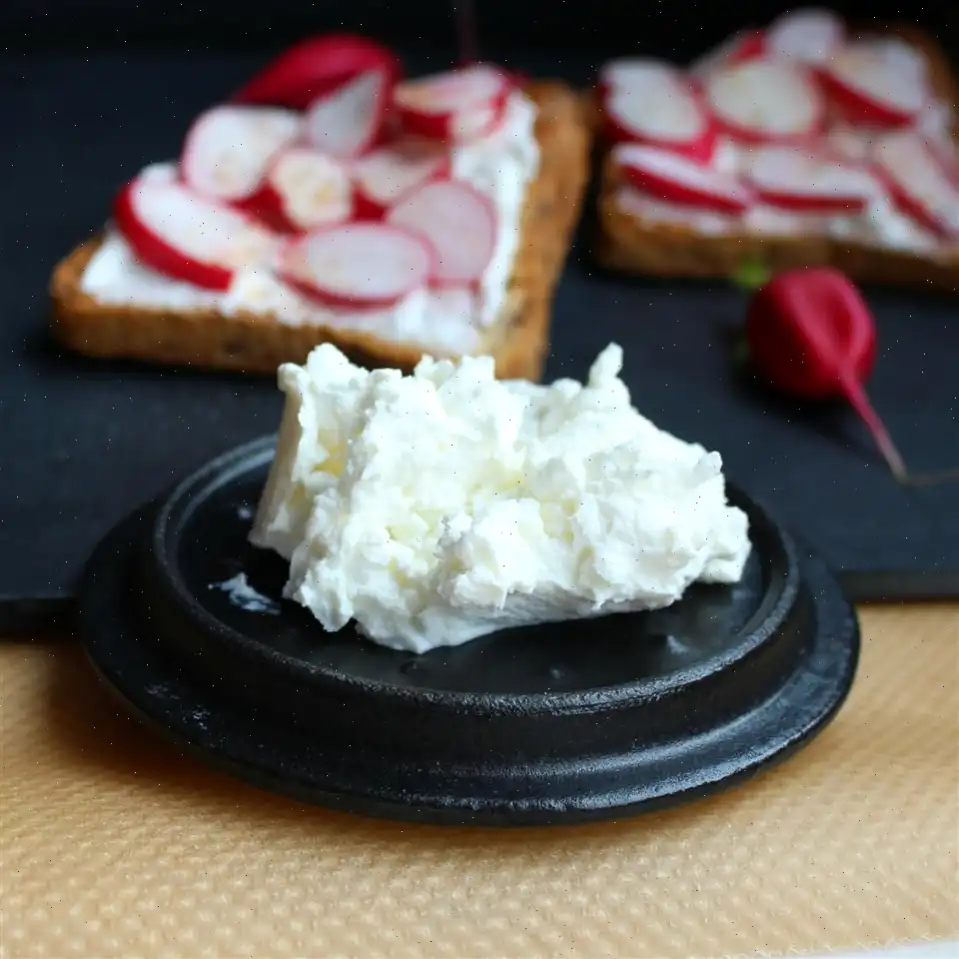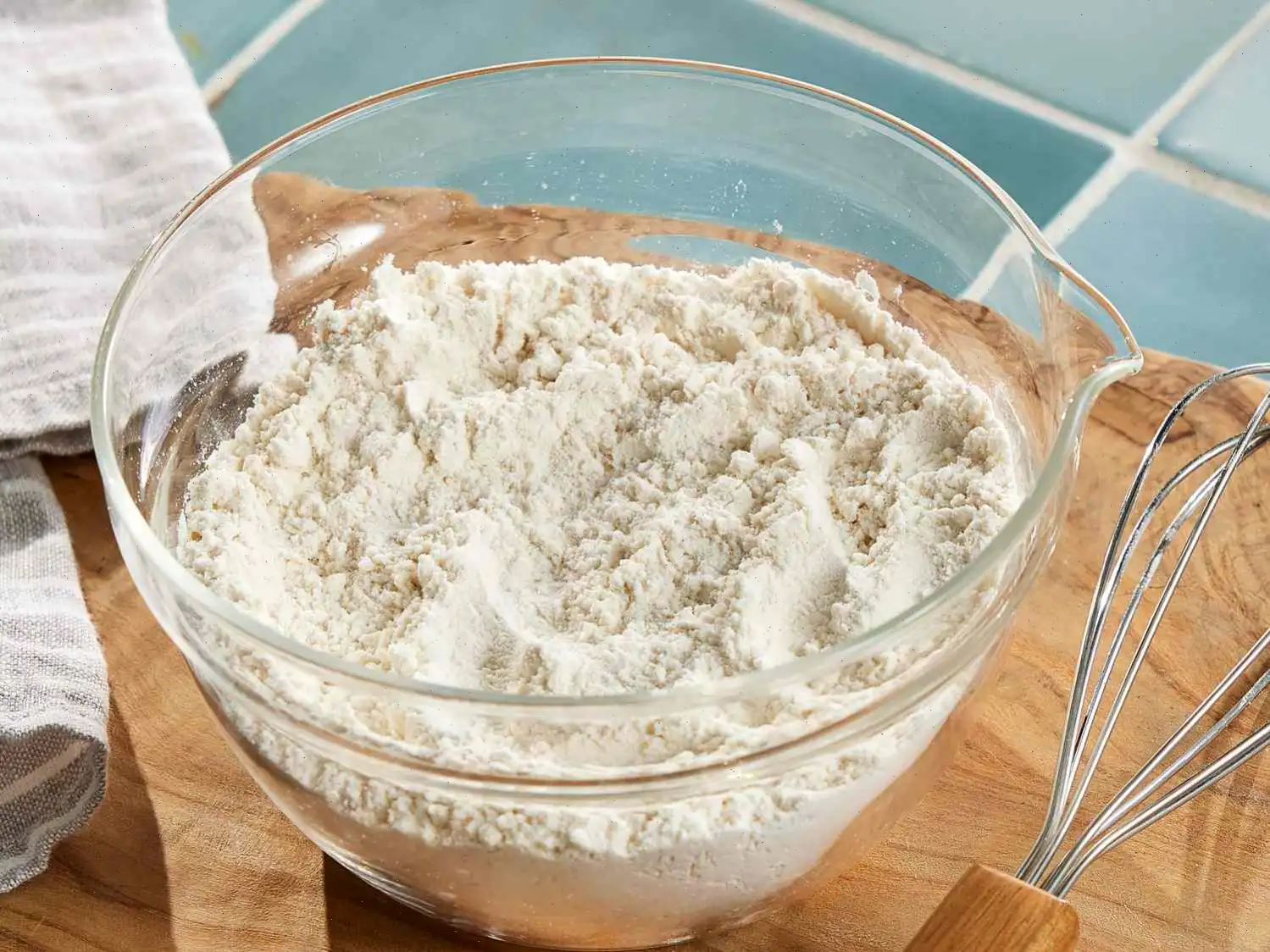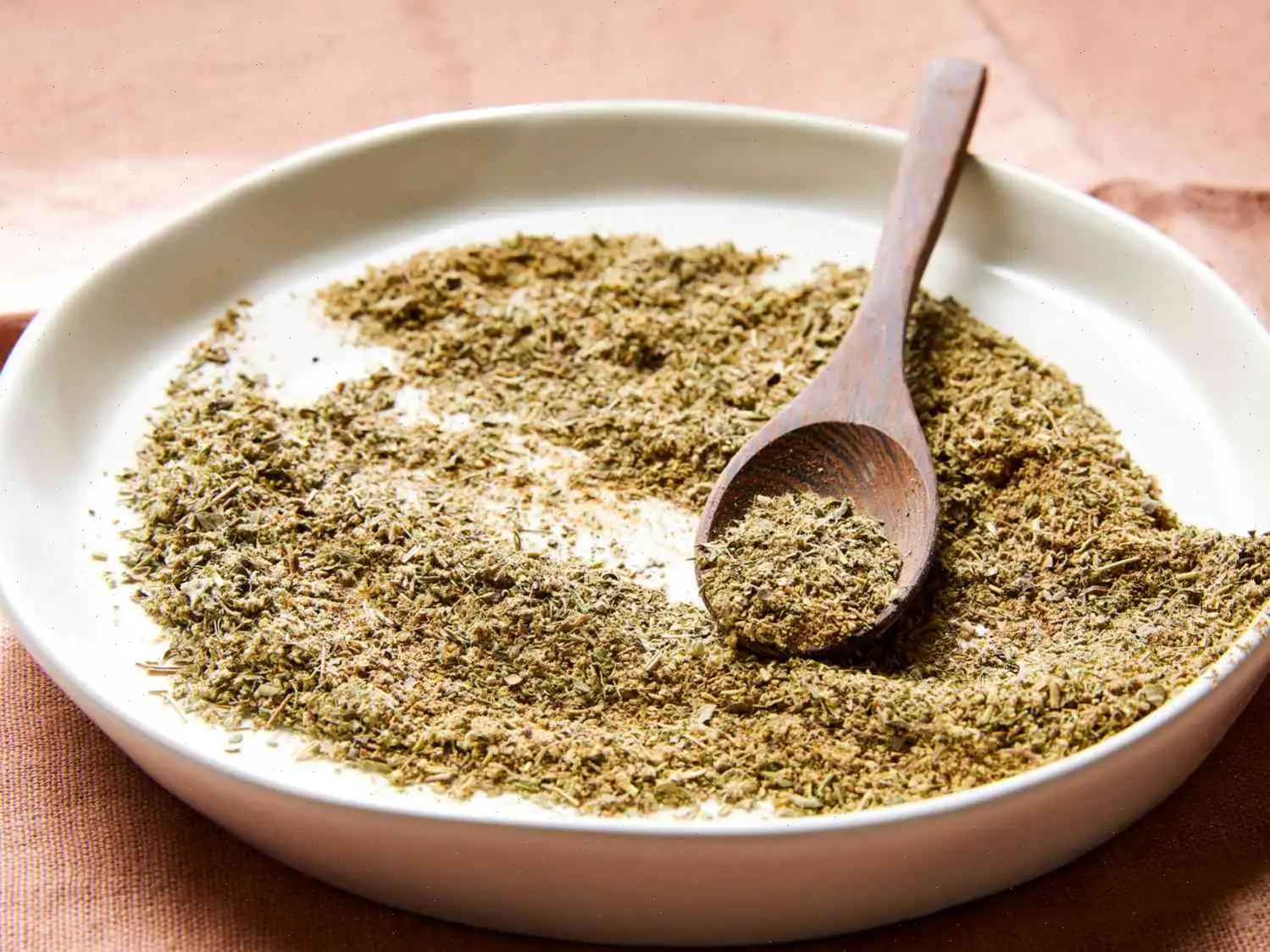
Quark (Homemade Cheese) Recipe
Ingredients
This recipe was developed at its original yield. Ingredient amounts are automatically adjusted, but cooking times and steps remain unchanged. Note that not all recipes scale perfectly.
Original recipe (1X) yields 4 servings:
- 2 cups milk
- cup buttermilk
Directions
Step 1: In a saucepan, bring the milk to a simmer. Once simmering, remove the pan from the heat and allow the milk to cool to room temperature.
Step 2: Whisk the buttermilk into the cooled milk until fully combined.
Step 3: Let the mixture sit at room temperature for 8 hours or overnight.
Step 4: After the resting period, strain the mixture through cheesecloth set over a bowl. Store the strained liquid in the refrigerator for 8 more hours or overnight.
Cook's Note
Be sure to let the milk cool to room temperature before whisking in the buttermilk. If the milk is too hot, the mixture will curdle, which can lead to undesirable results.
Nutrition Facts (per serving)
- Calories: 73
- Fat: 3g
- Carbohydrates: 7g
- Protein: 5g
Nutrition Breakdown
Servings Per Recipe: 4
| Amount Per Serving | % Daily Value* |
|---|---|
| Total Fat: 3g | 3% |
| Saturated Fat: 2g | 9% |
| Cholesterol: 11mg | 4% |
| Sodium: 82mg | 4% |
| Total Carbohydrate: 7g | 3% |
| Total Sugars: 7g | - |
| Protein: 5g | 10% |
| Vitamin C: 1mg | 1% |
| Calcium: 178mg | 14% |
| Iron: 0mg | 1% |
| Potassium: 229mg | 5% |
* Percent Daily Values are based on a 2,000 calorie diet. Your daily values may be higher or lower depending on your calorie needs.
** Nutrient information is not available for all ingredients. Amount is based on available nutrient data.
(-) Information is not currently available for this nutrient. If you are following a medically restrictive diet, please consult your doctor or registered dietitian before preparing this recipe for personal consumption.

Origin of Quark
Quark, a soft and creamy cheese with a mild taste, is a staple in many European kitchens, especially in Germany, Austria, and Eastern Europe. Its roots can be traced back to ancient times, with early mentions of similar curd cheeses in Germanic and Slavic cultures. Historically, quark was often made in home kitchens, using simple, natural ingredients like milk and buttermilk. Its widespread use in the Alpine and Central European regions has contributed to its ongoing popularity in these areas. While its exact origins remain uncertain, its enduring presence in traditional European diets speaks to its simplicity and versatility.
Regional Variations
Across Europe, the preparation of quark varies slightly, influenced by local dairy practices and culinary traditions. In Germany, it is typically made with cow's milk and buttermilk, resulting in a smooth, creamy texture. In contrast, Austrian and Swiss quarks might be slightly drier or firmer, depending on how long the whey is drained. In countries like Poland and the Czech Republic, quark is often used in sweet dishes, like cakes and pastries, while in Germany, its also a common addition to savory dishes like soups, spreads, or even eaten with fresh bread.
What Sets Quark Apart
Quark is often compared to other soft cheeses like ricotta or cream cheese. However, it stands out because of its unique production method. Unlike cream cheese, quark is not made with cream but with milk and buttermilk, which gives it a lighter, less fatty consistency. Ricotta, on the other hand, is made from whey, giving it a more grainy texture. What truly sets quark apart is its slightly tangy taste, similar to yogurt but much richer in texture. This makes quark an ideal base for both savory and sweet dishes, offering a versatility that many other cheeses lack.
Where Is Quark Typically Served?
Quark is a beloved ingredient in many European kitchens and can be found in a wide variety of dishes. In Germany, it is often served as a spread on bread or crackers, paired with herbs, fruits, or a sprinkle of salt. It is also a key ingredient in traditional dishes like German cheesecake (Ksekuchen) or quark dumplings. In other countries, such as Russia and Poland, quark is used to fill pastries or mixed with sugar and fruit for a delicious dessert. Whether sweet or savory, quark adds a creamy texture and mild flavor to a variety of culinary creations.
Interesting Facts About Quark
- Quark has been consumed for centuries in Central and Eastern Europe and is still a common feature in traditional diets today.
- The word "quark" is derived from the German word "Quark," meaning curd, and is related to the Old High German word "twarc," meaning sour milk.
- Quark is an excellent source of protein, with a relatively low fat content, making it a healthy option for those looking to reduce fat intake while still enjoying dairy products.
- In some regions, quark is not only used in savory dishes and desserts but also in beauty treatments. Its creamy texture and natural acids are thought to be beneficial for skin care.
- While quark is easy to make at home, it is still a vital part of many European cuisines, where homemade varieties often outperform mass-produced versions found in stores.
FAQ about Quark (Homemade Cheese) Recipe
Comments
Stephen Hernandez
10/29/2022 12:26:46 AM
I followed the instructions to make this cheese. However, after the recommended time, most of the thickened liquid drained through the cheesecloth, leaving me with doubts about its solidity. I decided to let the mixture sit for two days at room temperature, and after straining it again, I finally achieved the desired consistency. The initial taste was lackluster, so I added a touch of salt for flavor. It now resembles soft cheese and pairs wonderfully with crackers, fruits, or herbs as toppings. I gave it a four-star rating for its taste and texture, but only after making some adjustments on my own.
Nancy Jones
03/13/2024 01:52:01 AM
I left it on my countertop for 12 hours, and when I tried to strain it, the liquid passed through effortlessly. There were no curds at all.
Heather Allen
02/02/2023 11:58:30 AM
I discovered my love for Quark during a recent trip to Germany. Unable to find it back home, I decided to try making it myself. This recipe was a success! The taste was spot on, just like what I enjoyed in Germany. I'll definitely be making it over and over again.








